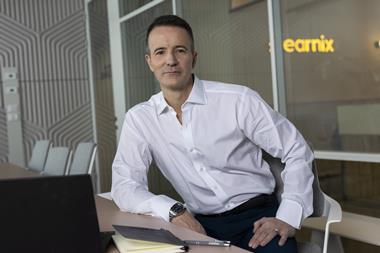’We won’t ever be the biggest, but we do want to be the most profitable,’ says chief executive
In its latest financial results for H1 2024, published on 30 July 2024, specialist motor insurer Sabre posted an 83.6% combined operating ratio (COR) and saw its pre-tax profit jump from £4.8m for H1 2023 to £20.2m this year.

Maintaining such a solid COR for the first half of 2024 is no mean feat in a motor market that saw such difficult operating conditions across the last year.
For example, consultancy firm EY’s UK Motor Insurance Results report, published on 16 July 2024, noted that UK motor insurers achieved an aggregate COR of 112.8% in 2023, with 2022’s figure not much better at 111.1%.
EY did forecast that, with inflation now falling, the market would return to profitability for 2024 and predicted an aggregate COR of 96%. However, Sabre’s H1 results estimated that it would achieve a COR in the range of 75% to 80% for its full-year results.
So, what is driving this outperformance of the UK motor market?
Primarily, Sabre chief executive Geoff Carter puts this down to the firm’s scale and underwriting strategy. He explains: ”We plant our flag very, very clearly that we’re going after margin first and that’s what we focus on.
”Aiming for the COR that we do is always going to limit the ability for scale because there’s only so many policies you can underwrite at [around a] 20% margin. We won’t ever be the biggest, but we do want to be the most profitable.”
Sabre’s scale – H1 2024 gross written premiums of £125.7m across just under 300,000 policies – does provide it with flexibility, Carter continues, meaning that the insurer does not need to chase volume and “get stuck in no man’s land”.
However, Carter adds that there still remains significant headroom for expansion, with Sabre targeting “nice, sustainable” growth of between 10% and 15% per year.
Barbell approach
In addition to the flexibility offered by its scale, Sabre employs an underwriting “barbell approach” that makes the margins it needs to function at a smaller scale achievable.
Read: Sabre ‘now seeing the benefits’ of making an early call on inflation – Geoff Carter
Read: DLG bid evidence of ‘a fairly optimistic outlook’ for UK motor
Explore more insurer-related content here, or discover other news stories here
Carter explains: ”You can think of the barbell as underwriting across various customer segments. An easy example is wealthy people with expensive cars in central London, where there’s a fairly limited market for people who are prepared to underwrite that business, but we’re very happy to do it.
“At the other end of the market, we’re also very happy to underwrite people who are in less affluent areas or higher risk postcodes. The important thing is that we treat both of those customer groups exactly the same, going for 25% margins across the piece.”
The visual metaphor of the barbell describes a focus on these two unique ends of the motor market, with Carter noting that Sabre’s approach to seeking out margins leaves it unlikely to win business in the crowded, less risky middle of the market where other major motor carriers operate.
Providing access to insurance for the extremities of the motor market, where the probability of a claim is higher, is also supported by targeting higher margins. Carter explains: ”If we’re writing those risks, we have to make sure we have enough margin to pay for them because, for example, you do see expensive cars stolen on a fairly regular basis.”
Carter believes that Sabre stands out from the crowd as it has remained difficult for new entrants to this part of the market to put down roots.
”There’s not many players with us [in this part of the motor market] who are there sustainably,” says Carter.
”People come in and out because you can look at the high margins and think ’that must be easy to undercut’, but it doesn’t really work that way.”
A sophisticated data lake and experienced actuarial teams allows Sabre to effectively price for the more specialist ends of the motor insurance market, Carter adds, which provides the insurer with “confidence that the price we’re putting forward will deliver that rate”.
He says: ”We’ve written so many non-standard risks over the last 30 years. But if you’re starting from scratch, how you do figure out that price? I have no idea how I’d start Sabre if I was doing it from scratch today.”

With a particular focus on regulation, geopolitical and systemic risks and conflict, he has covered the insurance implications of the Ukraine war, riots in France and the commissions scandal for multioccupancy buildings insurance.View full Profile
















































No comments yet